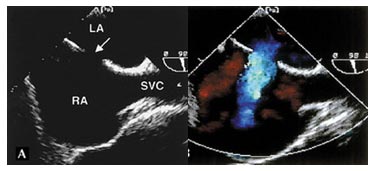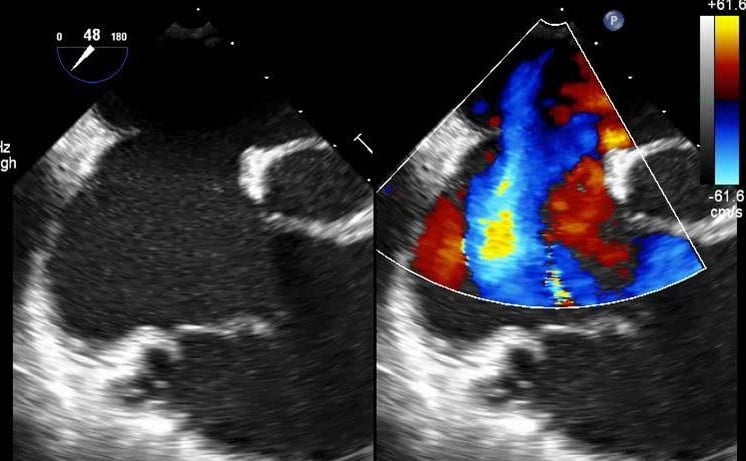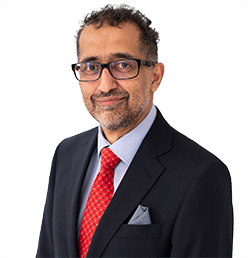What is an Transoesophageal Echocardiogram (TOE)?
This investigation is performed at One Welbeck Heart Health, where we also work.
A Transoesophageal Echocardiogram is a special procedure using an ultrasound probe that is swallowed, similar to endoscopy.
This tube rests in the lower end of the gullet (oesophagus). From here, it directs a beam of ultrasound to the heart directly and with no structures in the way. It allows a very clear and accurate multi-dimensional picture of the heart to be built up. The greater resolution allows us to see the smaller structures:
- evidence of heart infection (endocarditis)
- the presence and dimensions of holes in the heart, such as Atrial Septal Defects (ASD) and Patent Foramen Ovale (PFO)
- vavular heart disease assessment if the TTE is not definitive

ASD “Hole in the heart”.
What happens during a Transoesophageal Echocardiogram (TOE)
This procedure is undertaken in one of out partner facilities. A Transoesophageal Echocardiogram is a slightly more invasive procedure than a normal Echocardiogram. It involves a morning or afternoon in the hospital. You have to fast for at least 4 hours to make sure the stomach is empty. A small needle will be placed in a vein on the back of the hand. You will need to sign a form, giving consent and then be taken to the imaging room, where you lie upon a trolley. The back of your throat will be sprayed with a local anaesthetic aerosol, which numbs and freezes the back of the throat. Many people can have the procedure performed without sedation, but some prefer to have mild sedation with a very low dose of a short acting sedative. Either way, the narrow probe is placed on the back of the tongue and the patient then swallows the probe, under the guidance and control of the Cardiologist. A series of pictures are then taken and the whole procedure lasts some 15 minutes or so.
An an example, below you can see 3D TOE images of ASD closure device in situ:
What happens after a Transoesophageal Echocardiogram (TOE)
At the end of the procedure, the probe is removed and the patient is allowed to recover. It is recommended that a relative or friend collects you to return you home and keep you company for the rest of the day. The results are available straight away, but because of the sedation, it is best to discuss them on a separate day with you.



